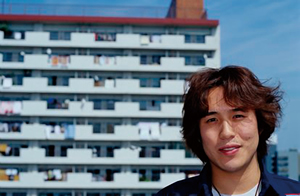Home > Housing Information > Useful Tips To Find Housing in Japan > Popular Housing and Conditions that Drive Up Rent
Popular Housing and Conditions that Drive Up Rent


This section explains the conditions for popular housing in Japan.
By understanding specific conditions that drive up rent and deciding on conditions that you can compromise on, you can have real estate agencies efficiently find housing that fits your needs while keeping your living costs minimal.

- ◆ Direction that your main room (window) is facing
- Japan has four seasons, and people favor rooms that face south. This is because the southern direction gets the most sunlight, and because south facing rooms are cool in the summer and warm in the winter. (This phenomenon is caused due to the location of Japan on earth relative to the position of the sun during each season. The amount of direct sunlight exposure that south facing rooms receive is low during the summer, and high in the winter.) Room layout diagrams always show direction, and if windows of the room are facing south, the diagram would have “”facing south” written clearly as an advertising point. However, please note that for rooms located on the first floor or are surrounded by buildings that block the sun, facing south would not make a difference. If you do not mind having less sunlight in your room, looking for rooms not facing south may help you find rooms with cheaper rent.

- ◆ Number of rooms adjacent to your room / corner room
- Corner rooms allow windows on two to three sides of the room. These rooms are popular as they receive more sunlight and breeze. Corner rooms also have fewer rooms adjacent to them, so trouble with noise also becomes less of a concern. This tends to make corner rooms more expensive.

- ◆ Building age
- Japanese people favor newly built buildings. If this is not a necessity for you, you would be able to find rooms with relatively cheap rent. Older buildings also tend to be more spacious, so if you want a larger room, compromising on the age of the building may be a favorable choice.

- ◆ “Bunjo Chintai” housing (rental apartments originally for sale)
- Housing that is originally built for sale and becomes available for lease is called “Bunjo Chintai,” and is differentiated from rooms that are built specifically for rental. This is because bunjo chintai apartments are originally built for sales purpose, and tend to come with “high spec” facilities and amenities. The building itself also tends to be made with materials of higher durability and with higher resistance to fires and earthquakes. These features make these rooms more appealing to tenants. If having high grade facilities is not a priority for you, consciously avoiding bunjo chintai housing may be something to consider for cheaper rent.

- ◆ Kitchen with gas cook top
- Japanese people tend to favor kitchens with 2 or more gas cook tops. Recently, some rooms come with electric kitchens that use no gas, but many rooms tend to have gas facilities. Having 2 or 3 cook tops is important to those who like cooking, and is therefore popular. If you do not cook, kitchen facilities may be a condition which you can compromise.

- ◆ Separate bathroom and toilet
- Taking a hot bath is culturally dominant in Japan; many Japanese people feel that having only a shower is insufficient. Also, Japanese people feel uneasy about having the bathroom and toilet in the same space, and prefer having them separate. If this is not a concern for you, informing the real estate agency about your compromise may help your room search.






